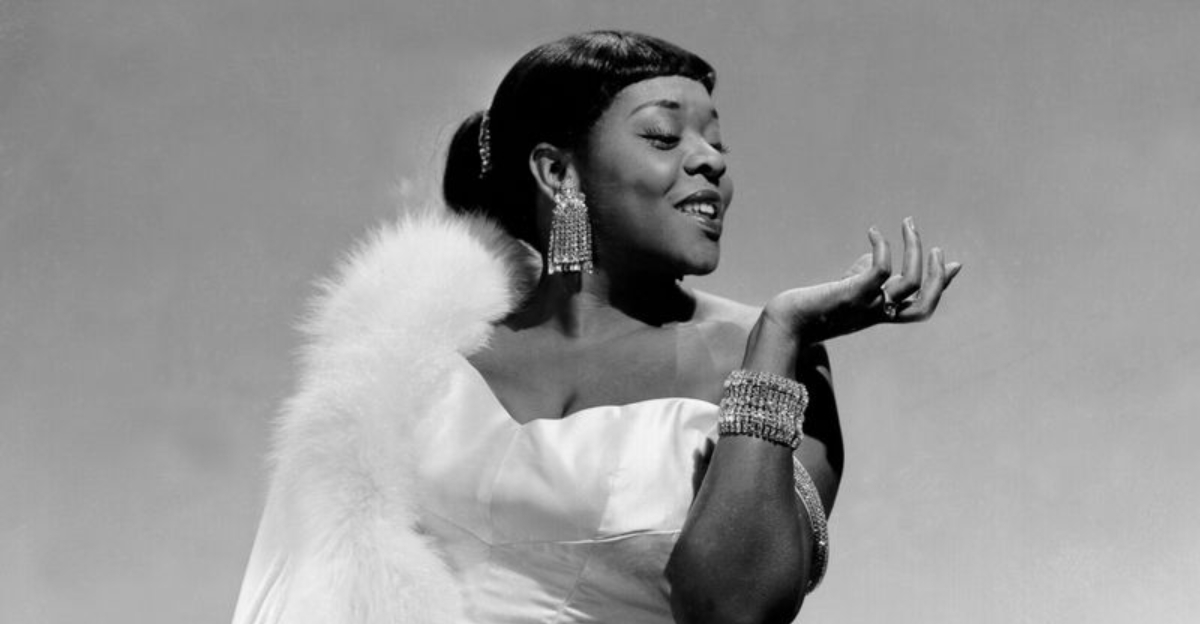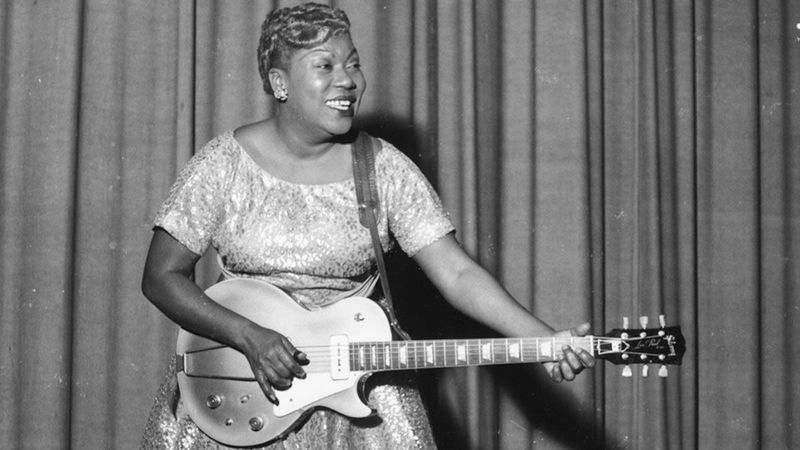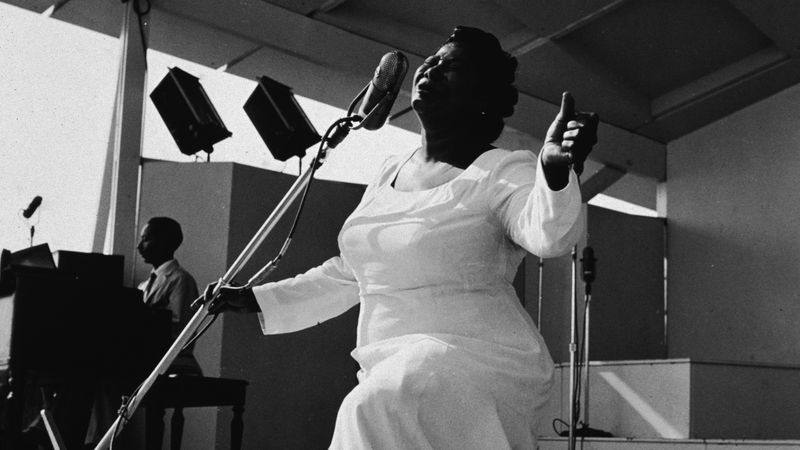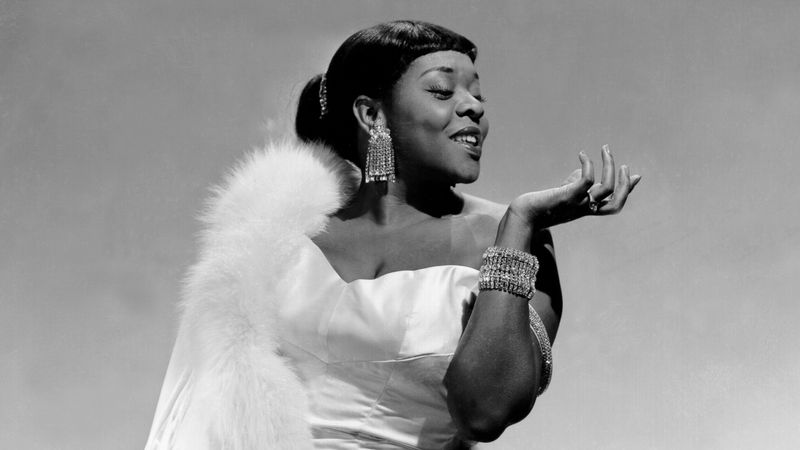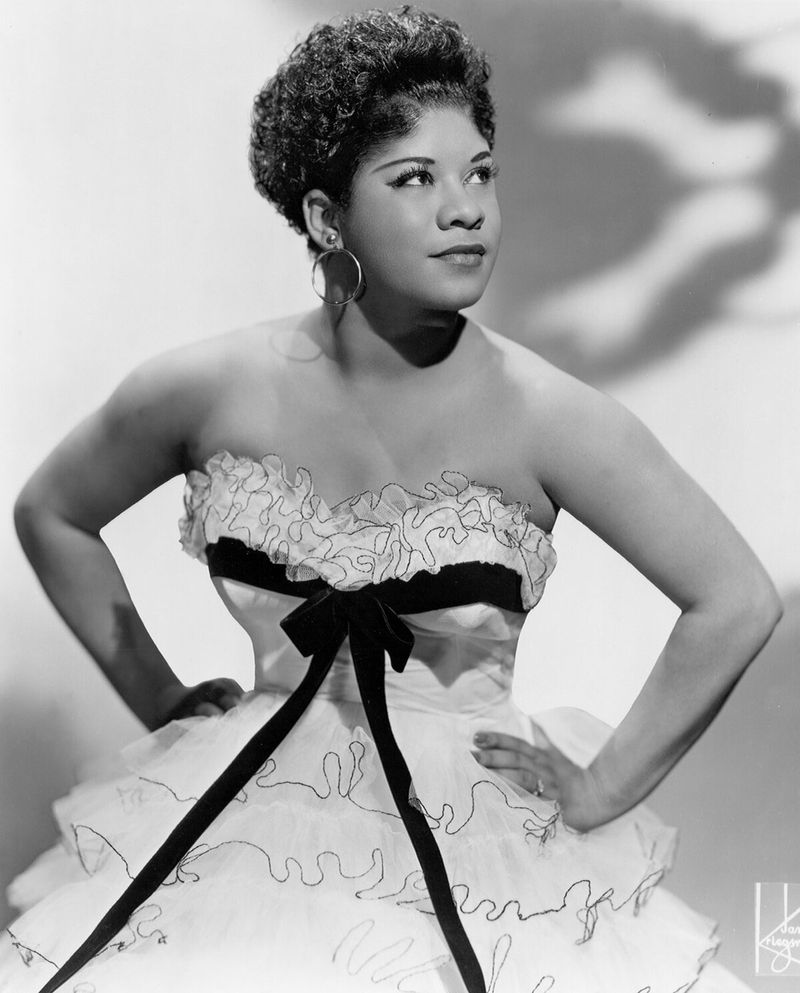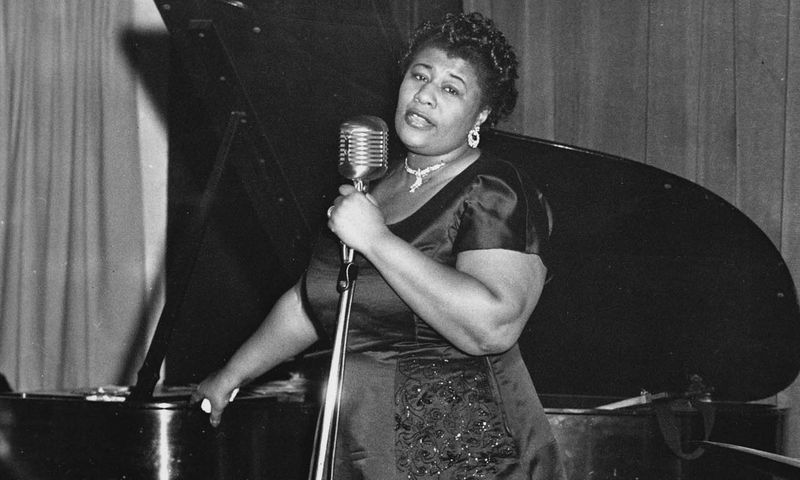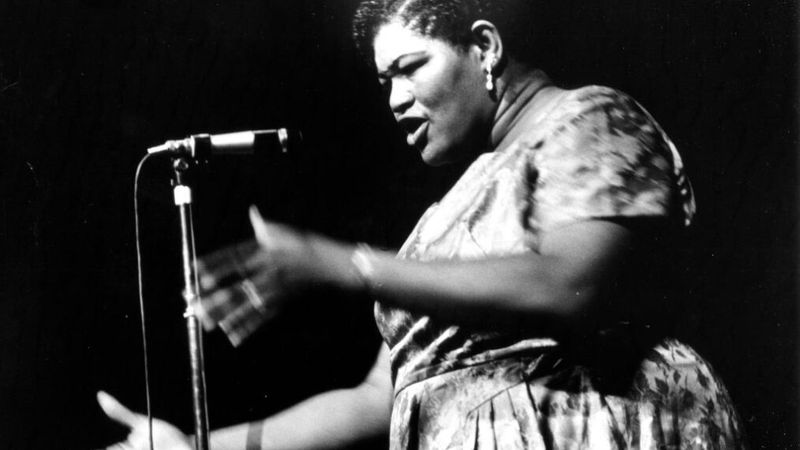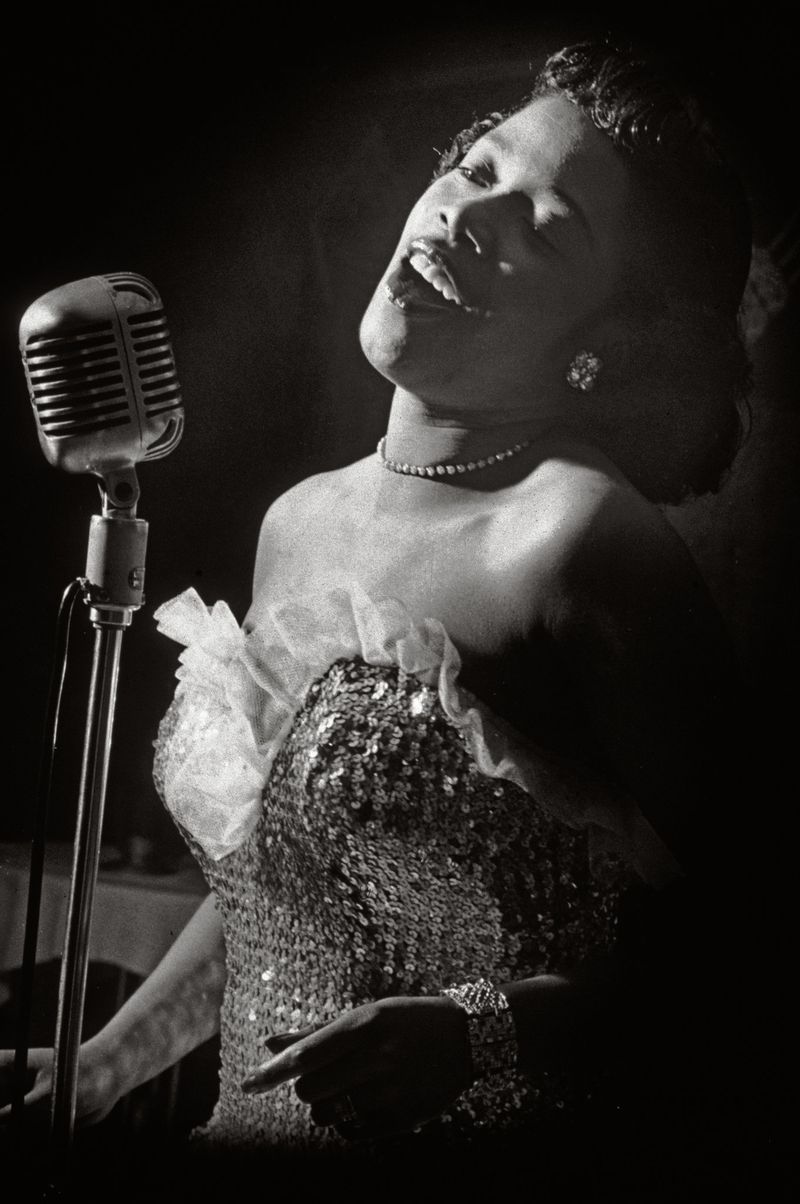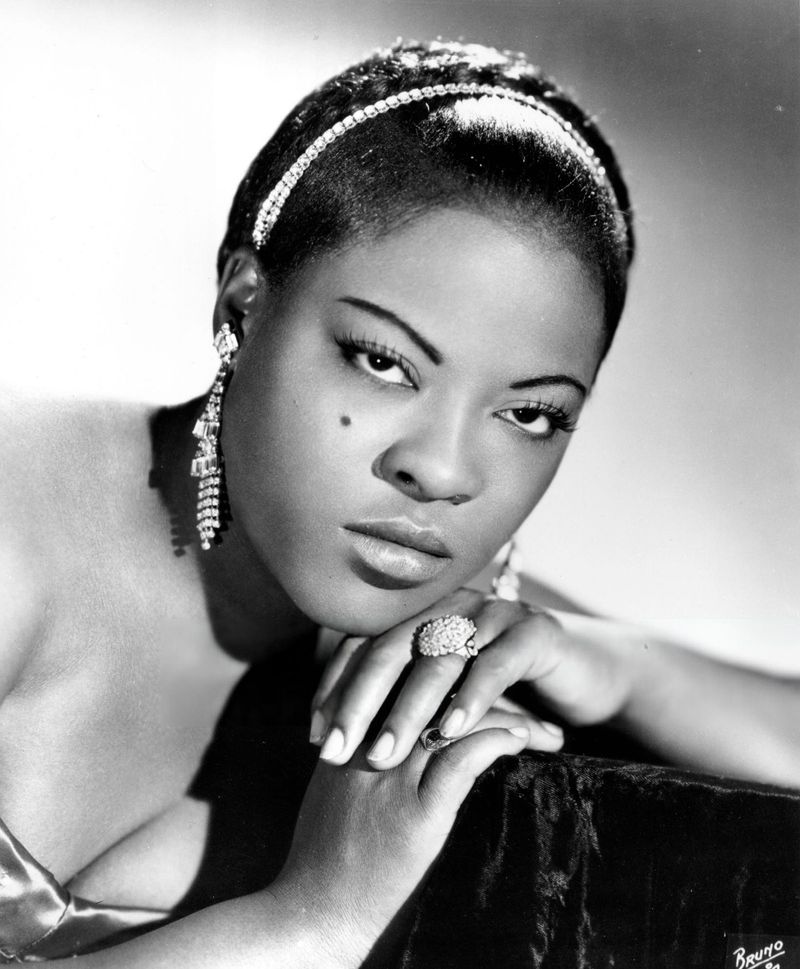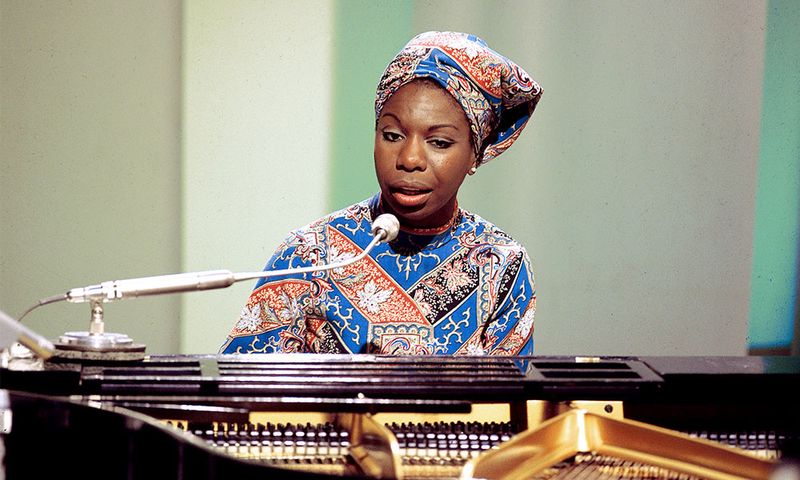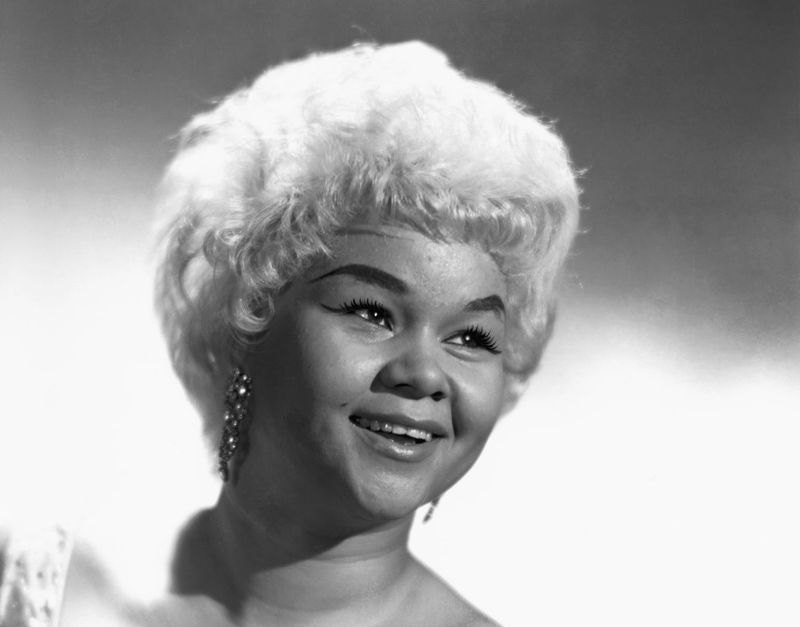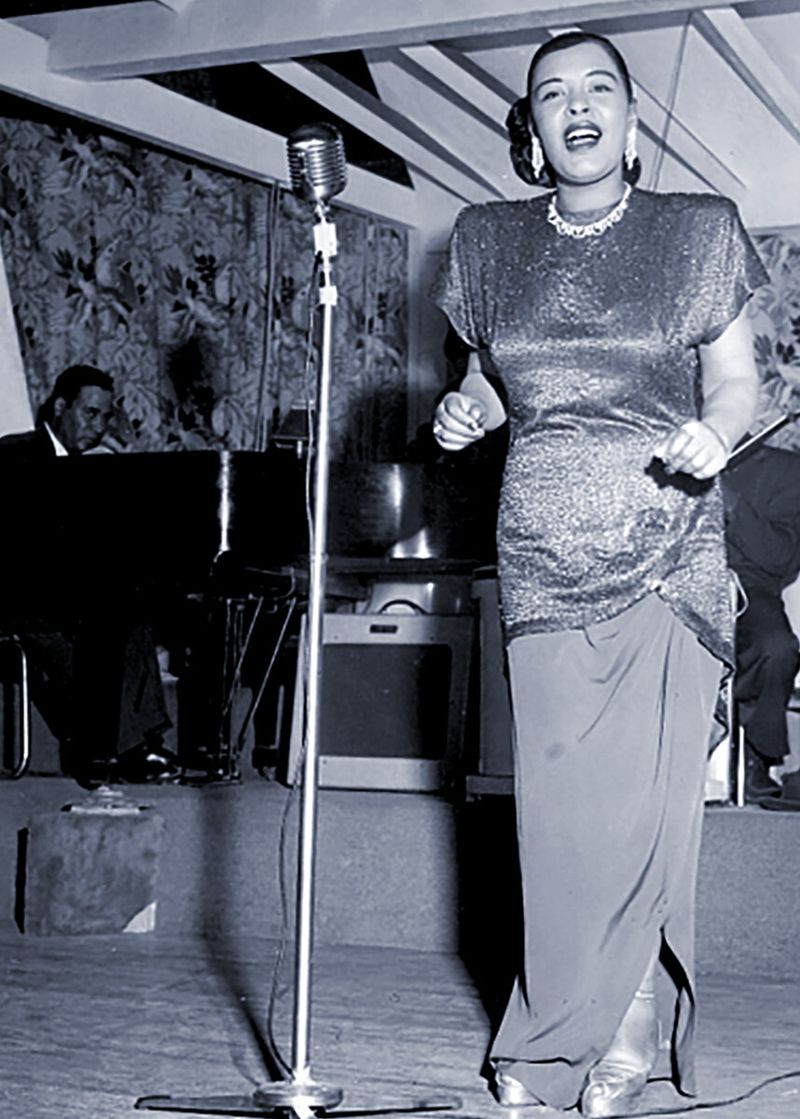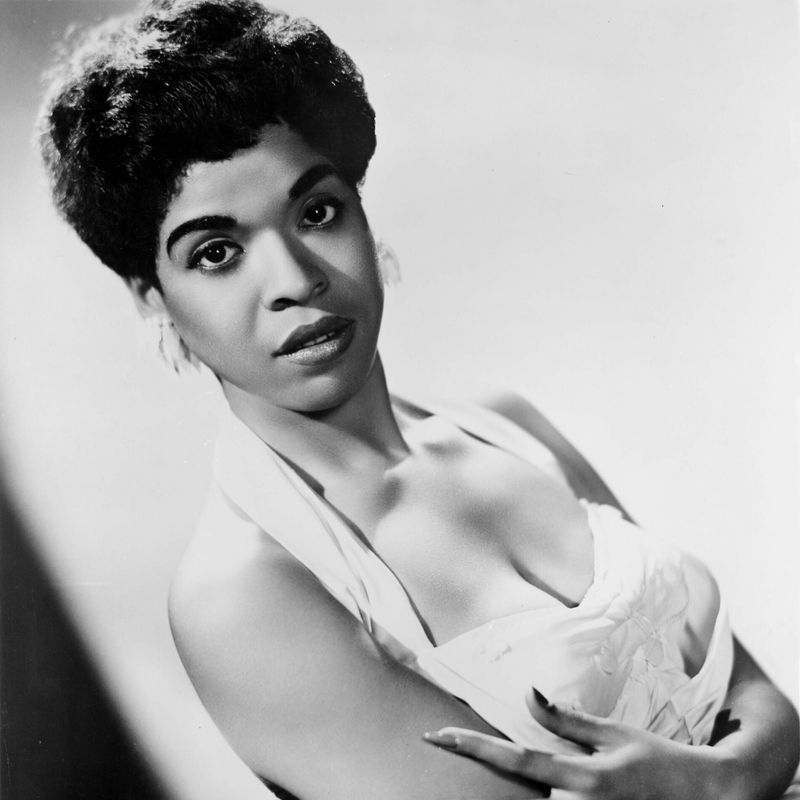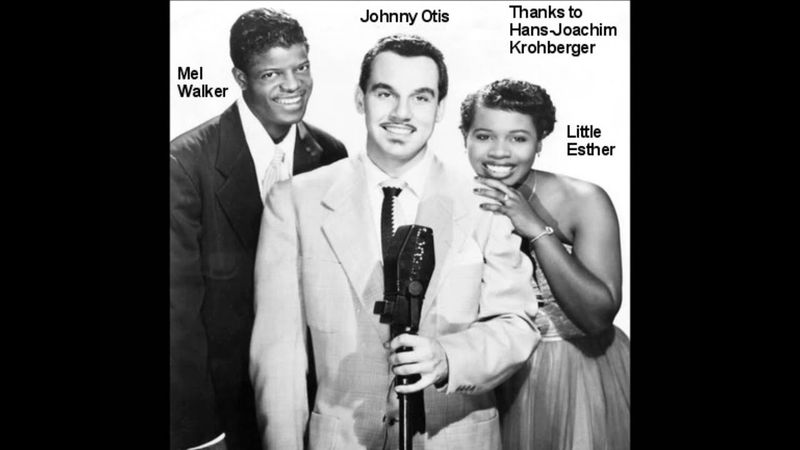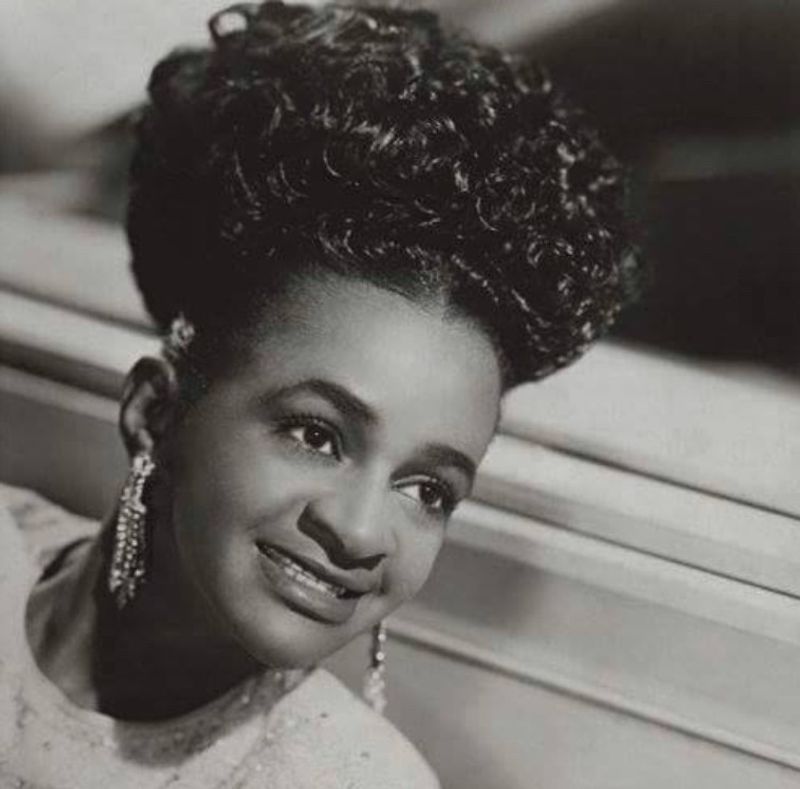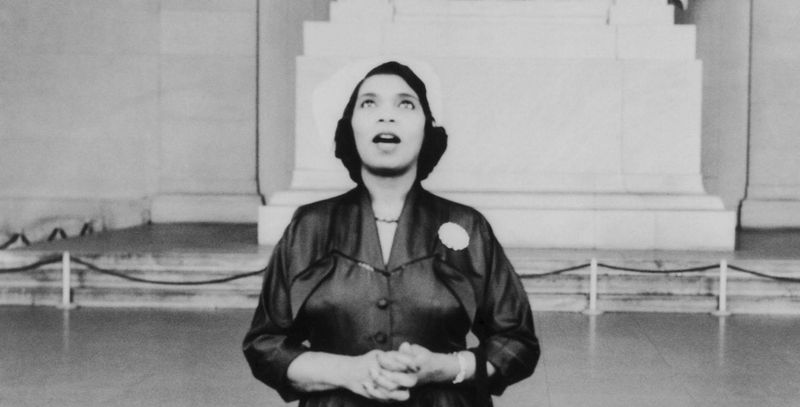The 1950s music scene wasn’t just about the birth of rock ‘n’ roll – it was also when powerful Black women vocalists shattered barriers and redefined American music. These singers brought raw emotion, technical brilliance, and cultural depth to genres from gospel to jazz to early R&B. Their voices not only topped charts but also became soundtracks for social change during a pivotal decade in American history.
1. Sister Rosetta Tharpe: The Godmother of Rock and Roll
Wielding her electric guitar like a weapon of musical revolution, Sister Rosetta Tharpe blazed trails others only dreamed of following. Her fingers danced across fretboards while her powerful voice merged gospel’s spiritual depth with the rhythmic pulse of early rock and roll. Born in Cotton Plant, Arkansas, Tharpe defied convention by bringing religious music into nightclubs and adding a holy swing to secular spaces. Her hit “Strange Things Happening Every Day” became the first gospel song to cross over to Billboard’s race records chart in 1945, but her 1950s performances cemented her legacy. Male rock pioneers from Elvis to Little Richard openly credited her influence, yet history nearly forgot her revolutionary contribution. With her signature Gibson SG and commanding stage presence, Tharpe wasn’t just participating in music history—she was writing its future.
2. Mahalia Jackson: The Queen of Gospel
Crowned the undisputed Queen of Gospel, Mahalia Jackson’s thunderous voice could shake church rafters while simultaneously touching the deepest corners of listeners’ souls. Her refusal to sing secular music showcased an unwavering dedication to her faith, even as record companies dangled lucrative contracts. Jackson’s 1950s breakthrough came with “Move On Up a Little Higher,” which astonishingly sold eight million copies – unprecedented for gospel recordings. Her performance at the 1958 Newport Jazz Festival broke barriers, bringing sacred music to mainstream audiences who might never have entered a Black church. Beyond music, Jackson became the spiritual soundtrack to the civil rights movement. Her friendship with Dr. Martin Luther King Jr. led to her singing before his famous “I Have a Dream” speech, where she famously encouraged him to “tell them about the dream.”
3. Dinah Washington: The Queen with the Distinctive Voice
Sassy, bold, and unforgettable – Dinah Washington’s voice cut through the noise of the 1950s music scene with razor-sharp precision. Her unique vocal timbre could transform even the most familiar standards into something entirely new, earning her the title “Queen of the Blues” despite her versatility across jazz, R&B, and pop. Washington’s career exploded in 1959 with “What a Diff’rence a Day Makes,” a Latin-tinged masterpiece that showcased her impeccable phrasing and emotional intelligence. Behind her commercial success lay a technical brilliance that few could match – her crystal-clear enunciation and perfect pitch made every word matter. Famous for her no-nonsense personality and seven marriages, Washington lived as boldly as she sang. Her influence echoes through generations of singers who learned that attitude and authenticity were just as important as vocal range.
4. Ruth Brown: The Original R&B Queen
Atlantic Records might have been called “The House That Ruth Built” if the music industry had been more honest about Ruth Brown’s staggering contribution to rhythm and blues. Her string of hits throughout the 1950s – including “Teardrops from My Eyes” and “5-10-15 Hours” – literally kept the fledgling label financially afloat during its formative years. Brown’s distinctive vocal style blended jazz sophistication with gut-bucket blues emotion, creating a template for R&B singing that artists still follow today. Her rhythmic precision and dramatic delivery turned simple songs into mini-theatrical events, each one telling a complete emotional story in under three minutes. Later in life, Brown became a fierce advocate for artists’ rights after discovering she’d been cheated out of royalties. Her activism led to the formation of the Rhythm and Blues Foundation, ensuring future generations of performers wouldn’t suffer the same financial exploitation.
5. Ella Fitzgerald: The First Lady of Song
Possessing perhaps the most perfect instrument in jazz history, Ella Fitzgerald’s voice combined technical precision with improvisational genius. Her 1950s “Songbook” series, where she interpreted the great American composers, remains the definitive vocal jazz achievement of the 20th century. Fitzgerald’s legendary scat singing – demonstrated gloriously in her 1958 recording of “How High the Moon” – revealed a musician who could match any instrumentalist note for note. Despite facing racial discrimination throughout her career, including being denied bookings at prestigious venues, her sheer brilliance eventually opened doors previously closed to Black performers. Though known for her sunny disposition and lack of blues credentials, Fitzgerald could convey heartbreak with devastating subtlety. Her perfect pitch, crystalline diction, and three-octave range made her the standard against which all jazz singers are measured – a standard few have approached.
6. Big Mama Thornton: The Original Hound Dog
Raw, unfiltered, and packing more attitude than the entire rock revolution that followed her, Willie Mae “Big Mama” Thornton created the blueprint for rock vocal styling before the genre even had a name. Her 1952 recording of “Hound Dog” spent seven weeks at #1 on the R&B charts three years before Elvis Presley sanitized it for white audiences. Standing six feet tall and often dressed in men’s clothing, Thornton commanded attention through sheer force of personality. She played drums and harmonica alongside her powerful vocals, embodying the self-sufficient musician spirit that would define rock’s future. Despite creating the original versions of songs that made others millions, Thornton received just $500 for “Hound Dog” and lived in relative obscurity. Her growling, shouting performance style influenced countless rockers who achieved the fame and fortune that largely eluded the pioneering Thornton herself.
7. Sarah Vaughan: The Divine One
Blessed with an instrument of extraordinary range, flexibility and tonal beauty, Sarah Vaughan elevated jazz singing to new heights of artistic expression. Nicknamed “The Divine One” and “Sassy” by her peers, Vaughan possessed a voice that could swoop from contralto depths to soprano heights with astonishing control. During the 1950s, Vaughan’s recordings with Columbia and Mercury Records showcased her remarkable musicianship. Her 1954 interpretation of “Misty” became her signature song, demonstrating her ability to transform a simple melody into a complex emotional journey through subtle phrasing and harmonic invention. Unlike many contemporaries, Vaughan was a complete musician who understood theory and composition. Her background as a church pianist gave her an intuitive grasp of harmony that allowed her to improvise like an instrumentalist, anticipating chord changes and creating melodic lines that musicians studied with the same reverence as a Charlie Parker solo.
8. LaVern Baker: The Little Miss Sharecropper
Fiery, spirited, and utterly irrepressible, LaVern Baker brought theatrical flair and vocal gymnastics to early rock and roll that few could match. Her 1955 hit “Tweedle Dee” showcased her playful approach to rhythm, while simultaneously demonstrating serious vocal chops that earned respect from musicians across genres. Baker fought openly against the common practice of white artists covering Black performers’ songs. When Georgia Gibbs scored a bigger hit with a note-for-note copy of “Tweedle Dee,” Baker famously took out a life insurance policy and named Gibbs as beneficiary before a plane trip, noting that Gibbs would be “out of business” if anything happened to the source of her material. As one of Atlantic Records’ first female stars, Baker helped define the label’s sound. Her theatrical background (she once performed as “Little Miss Sharecropper” in novelty shows) gave her performances a dramatic quality that made even her most lighthearted songs memorable.
9. Nina Simone: The High Priestess of Soul
Classically trained but denied admission to the Curtis Institute of Music due to her race, Nina Simone channeled her frustration into creating a genre-defying sound that still defies easy categorization. Her debut album in 1958 showcased a musician whose classical technique merged seamlessly with jazz improvisation, blues emotion, and folk storytelling. Simone’s deep contralto voice possessed a hypnotic quality that made listeners lean in closer. Her piano playing revealed her classical background through Bach-like counterpoint and precise articulation, even as she explored blues progressions and jazz harmonies with sophisticated ease. Though her most explicitly political work would come later, Simone’s 1950s performances already displayed the intensity and uncompromising artistic vision that would make her an icon. Her radical reworking of standards like “I Loves You, Porgy” demonstrated how she could transform familiar material into deeply personal statements about identity and dignity.
10. Etta James: The Matriarch of R&B
Though her signature hit “At Last” wouldn’t arrive until 1960, Etta James spent the 1950s developing the explosive vocal style that would make her a legend. Beginning her career at just 14 with the controversial “Roll With Me Henry” (retitled “The Wallflower” for radio), James brought raw teenage energy to rhythm and blues. James possessed a voice of remarkable versatility – equally convincing delivering gut-wrenching ballads or raucous dance numbers. Her early recordings with bandleader Johnny Otis revealed a singer who could match the intensity of any male shouter while maintaining a distinctly feminine perspective in her delivery and phrasing. Behind her powerful performances lay personal struggles with addiction and troubled relationships that would inform her most emotionally resonant work. James brought authenticity to every note she sang, developing a reputation for refusing to deliver anything less than her full emotional investment, regardless of the material.
11. Billie Holiday: Lady Day’s Final Decade
Though her prime recording years occurred earlier, Billie Holiday’s 1950s work represents some of her most emotionally complex performances. Despite a voice increasingly ravaged by hard living, Holiday’s late-career recordings possess a haunting quality that many consider her most honest work. Holiday’s 1956 album “Lady Sings the Blues” (accompanying her autobiography) captured a artist looking back on her life with unflinching honesty. Her distinctive phrasing – always behind the beat, stretching syllables across bar lines – remained intact even as her once-supple voice grew more fragile, adding poignant vulnerability to songs like “Strange Fruit” that she had been performing for decades. The contrast between her earlier recordings and these twilight performances tells a story of perseverance through incredible hardship. Harassed by federal agents, denied performance opportunities due to a drug conviction, and struggling with addiction, Holiday nonetheless continued creating art of remarkable integrity until her death in 1959.
12. Della Reese: From Gospel to Pop Success
Versatility defined Della Reese’s remarkable career trajectory from gospel child prodigy to sophisticated pop-jazz stylist by the 1950s. After touring with gospel queen Mahalia Jackson as a teenager, Reese brought spiritual fervor to secular material, creating a distinctive sound that landed her on the charts. Her breakthrough came in 1957 with “And That Reminds Me,” followed by her signature hit “Don’t You Know” in 1959. Reese’s warm contralto conveyed both vulnerability and strength, while her gospel background gave her phrasing a rhythmic flexibility that set her apart from more traditional pop singers of the era. Standing nearly six feet tall with a commanding stage presence, Reese dominated any room she entered. Her musical training allowed her to work with top-tier jazz musicians, while her natural charisma eventually led to acting roles. Throughout her multi-faceted career, Reese maintained the passionate delivery and spiritual connection to music she developed in Detroit churches.
13. Esther Phillips: The Little Esther Phenomenon
Discovered at just 13 years old, Esther Phillips (born Esther Mae Jones) became an overnight sensation as “Little Esther” with her 1950 hit “Double Crossing Blues.” Her precocious vocal maturity stunned listeners – here was a teenager who could convey adult heartbreak with unsettling authenticity. Phillips’ voice defied easy categorization, blending blues feeling with a distinctive nasal quality that cut through any backing. Despite her youth, bandleader Johnny Otis featured her prominently in his revue, recognizing a once-in-a-generation talent who could hold her own alongside seasoned performers. The 1950s brought Phillips tremendous success followed by devastating setbacks. Her struggle with heroin addiction derailed her career just as it was taking off, though she would later make several remarkable comebacks. Her early recordings showcase a singer with natural instincts for phrasing and emotional delivery that artists twice her age struggled to achieve.
14. Clara Ward: Gospel’s Glamorous Innovator
Bringing sequined gowns and theatrical showmanship to sacred music, Clara Ward revolutionized gospel performance while maintaining its spiritual essence. As leader of The Famous Ward Singers, she transformed traditional church music into dynamic entertainment without sacrificing its religious message. Ward’s arrangements incorporated jazz harmonies, call-and-response patterns, and dramatic key changes that influenced generations of gospel performers. Her group’s 1950 recording of “Surely God Is Able” demonstrated her innovative approach – building from a whisper to full-throated exultation while maintaining perfect control throughout. Unlike some contemporaries who viewed entertainment value as contradicting gospel’s message, Ward embraced performance aspects that would reach broader audiences. Her flamboyant stage presence and marketing savvy helped gospel music transcend church boundaries. Ward’s influence extended beyond sacred music – her vocal techniques and arrangements directly shaped early soul music, with artists like Aretha Franklin citing her as a primary influence.
15. Marian Anderson: Breaking Classical Barriers
Already famous for her 1939 Lincoln Memorial concert after being denied performance space at Constitution Hall, Marian Anderson continued breaking barriers throughout the 1950s. Her historic debut at the Metropolitan Opera in 1955 as Ulrica in Verdi’s “Un Ballo in Maschera” made her the first African American to perform on that prestigious stage. Anderson’s voice – described by conductor Arturo Toscanini as one that “comes around once in a hundred years” – possessed remarkable range, from rich contralto depths to soaring heights. Her classical repertoire included everything from German lieder to Italian arias, all performed with impeccable diction in multiple languages. Beyond her musical achievements, Anderson served as an unofficial ambassador during State Department-sponsored tours throughout Asia. Her dignity in the face of discrimination made her a powerful symbol of the civil rights movement, though she preferred letting her artistry speak rather than making explicit political statements.
